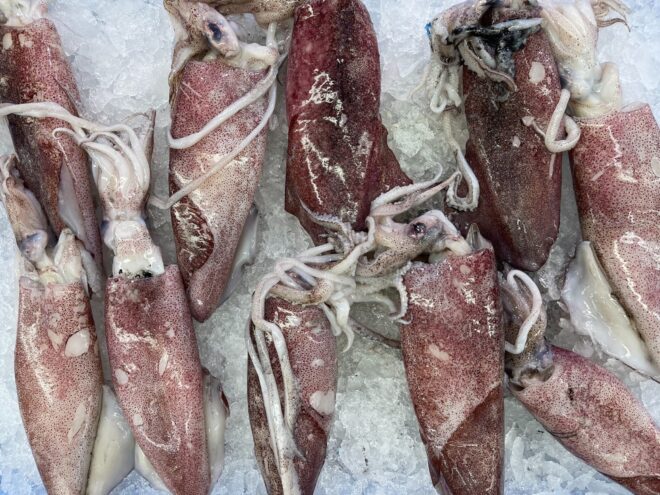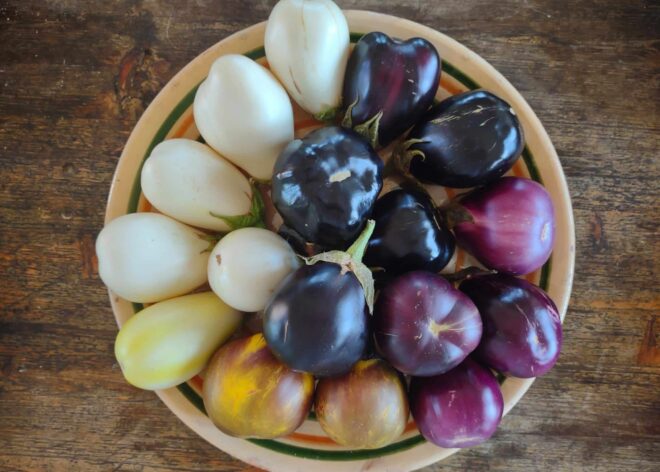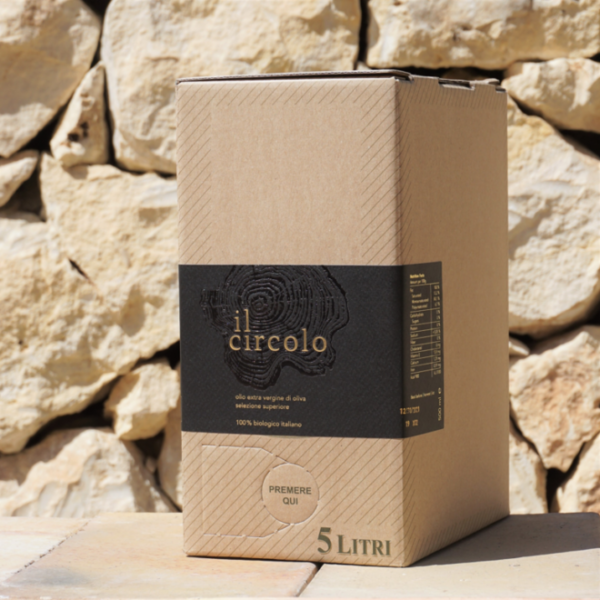
How is flavoured olive oil made?
Want to spice up the flavour of your dishes without much effort? Infused olive oil is a great way to

For us the Sicilian cuisine captures all the fascinating aspects of the region. It is an often surprising combination of flavours of only a few but very tasty local ingredients. When you enter a restaurant in a small Sicilian village, you will probably find a chef who is proud to introduce you to the local specialties, which turn out to be overwhelmingly tasty. In fact, the Sicilian cuisine is renowned for its distinct flavours, diverse influences, and the use of fresh, local ingredients. The Sicilian cuisine is a true reflection of the island’s rich history, cultural fusion, and its deep connection to the land and sea. Here we composed the main reasons that make it special.
Sicilian cuisine is influenced by a rich tapestry of cultural influences, resulting from the island’s history of various civilizations and the blending of diverse culinary traditions. Starting in the 8th century BCE, Sicily was once a part of Magna Graecia, a region colonized by ancient Greek settlers. Greek influence is seen in dishes such as couscous (known as “cuscusu” in Sicilian), which is believed to have been introduced by Greek colonizers. During the Middle Ages Sicily was under Arab rule, and their influence left a lasting impact on Sicilian cuisine. The Arabs introduced ingredients such as citrus fruits, almonds, pistachios, and spices like saffron and cinnamon. They also influenced culinary techniques such as preserving foods through drying and candying.

The Normans, who conquered Sicily in the 11th century, brought their culinary traditions, including dishes made with ingredients such as seafood, cheese, and spices. They also introduced the use of honey and techniques like roasting and braising. In the 15th and 16th centuries Sicily came under Spanish rule, bringing new ingredients like tomatoes, peppers, chocolate, and various spices. Spanish influence can be seen in dishes like caponata, a sweet and sour eggplant relish. The brief French occupation of Sicily in the 19th century left its mark on Sicilian cuisine, particularly in terms of patisserie and confectionery. French influence can be observed in desserts like cannoli and cassata, which have French-inspired elements.
Finally, as part of Italy, Sicilian cuisine shares many similarities with other regional Italian cuisines. However, Sicily’s unique geographical location and historical influences give its cuisine a distinct character. These cultural influences have contributed to the diversity and richness of Sicilian cuisine, resulting in a wide range of flavors, ingredients, and culinary techniques.
Being an island, Sicily benefits from an abundant supply of fresh seafood. No wonder, that fish and seafood play a significant role in Sicilian cuisine. This availability of fresh seafood in Sicily has influenced the culinary traditions of the island, resulting in a delightful array of dishes that showcase the bounty of the Mediterranean Sea.
Sardines (Sarde) are a staple in Sicilian cuisine, and they are prepared in various ways, including grilling, frying, or marinating. They are often featured in dishes like pasta con le sarde (pasta with sardines), where they are combined with fennel, pine nuts, raisins, and saffron.
Squid (Calamari) is another popular seafood ingredient in Sicilian cuisine. It is widely used in a variety of dishes, both as a standalone ingredient and in combination with other ingredients. Calamari’s tender texture and mild flavor make it a versatile ingredient that pairs well with various seasonings and accompaniments. Whether it’s enjoyed in fried form, stuffed, or incorporated into pasta or salads, calamari is a popular and delicious seafood option.

Tuna (Tonno) is highly prized in Sicilian cuisine. It is commonly used in dishes such as tonnato, where thinly sliced cooked tuna is served with a tangy sauce made from mayonnaise, capers, and lemon juice. Tuna is also enjoyed in preserved form, such as bottarga (salted, cured tuna roe) or tuna conserva (preserved tuna in olive oil).
Swordfish (Pesce Spada) is another popular seafood in Sicilian cuisine. It is often grilled or pan-fried and served with a variety of sauces and seasonings, including lemon, capers, and olive oil. Swordfish is also used in dishes like involtini di pesce spada (swordfish rolls) filled with breadcrumbs, pine nuts, and raisins.
Octopus (Polpo) is a beloved ingredient in Sicilian cuisine. It is often tenderized by slow-cooking or braising and used in dishes like insalata di polpo (octopus salad) or polpo alla ghiotta, where it is stewed with tomatoes, olives, capers, and aromatic herbs.
Mussels (Cozze) and Clams (Vongole) are widely enjoyed in Sicilian cuisine. They are used in pasta dishes like spaghetti alle vongole (spaghetti with clams) or cozze alla marinara (mussels in a tomato-based sauce) and are also enjoyed steamed or in soups.
Sicilian cuisine is known for its bold and intense flavours, often characterized by a harmonious balance of sweet, savory, and tangy elements. There are some flavors that are especially prominent in Sicilian cuisine:

Sicilian cuisine places great emphasis on using fresh, seasonal, and locally sourced ingredients. Fruits, vegetables, grains, herbs, and spices grow well in Sicily’s fertile soil, resulting in vibrant and authentic flavors. Most vegetables come in many varieties that you will not easily find in Northern European (super)markets.

In the summer you can find, for example, several different varieties of eggplants, which come in various shapes, sizes, colors and tastes. There is the Violetta di Sicilia, a large and dark purple variety with a glossy skin, a firm texture and a slightly bitter taste; the Rotonda Bianca di Palermo, round in shape and with creamy-white color, a mild and delicate flavor and a tender texture; or the Tonda Nera, a small, round, and dark purple eggplant, with a slightly bitter taste and firm flesh, which is commonly used in Sicilian dishes that combine eggplant with tomatoes, like Pasta alla Norma. Also when it comes to courgettes, also known as zucchini, Sicily is known for cultivating a large variety, each with its distinct characteristics. The Italian striped courgette, called Striato d’Italia, has light green skin with dark green stripes running lengthwise. It has a mild flavor and a firm texture. Then there is the Bianca di Palermo, or Palermo White, a pale green or creamy-white courgette variety. It has a delicate flavor and a tender texture; or the Romanesco courgette with its unique light green color and distinctive ridges. It has a slightly nutty flavor and a firm, crisp texture and is commonly used in salads, stir-fries, and pasta dishes. We could extend the list of examples for tomatoes, peppers, cabbage, beans and many other vegetables and fruits, that grow in the rich Sicilian soil, but we will leave this for another article.
Sicilian cuisine is known for its harmonious blend of sweet and savory flavors. Dishes like pasta with sardines and raisins, or desserts like cannoli filled with sweet ricotta cheese and candied fruit showcase this delightful contrast. The sweet and savory combinations in Sicilian cuisine are a reflection of the island’s complex culinary history and cultural influences, but originate also from its agrarian roots, where a tradition of blending ingredients from different sources—such as sweet fruits, salty fish, pungent cheese, and aromatic herbs—resulted in the development of dishes with complex flavor profiles.
Sicily has a vibrant street food culture, with markets and stalls offering a wide range of delicious snacks and treats. We list here the most famous street foods, popular because they provide a quick taste of Sicilian flavors:

Each region within Sicily has its own unique dishes and specialties, showcasing the diversity of the island’s culinary heritage. From the seafood-rich cuisine of the coastal areas to the hearty and rustic dishes of the inland regions, Sicilian cuisine offers a range of traditional recipes and local variations. One of the most famous and typical dishes from the Palermo region of Sicily is “Pasta con le Sarde” (Pasta with Sardines). It is a flavorful pasta dish that combines fresh sardines, wild fennel, pine nuts, raisins, saffron, and breadcrumbs. One of the most well-known and typical dishes from the Catania region of Sicily is “Pasta alla Norma.” This pasta dish is named after the opera “Norma” by Vincenzo Bellini, who was born in Catania. It is a flavorful and satisfying dish that showcases the region’s local ingredients. Its sauce is made of sautéed eggplant combined with tomato sauce, basil, and ricotta salata cheese. The Marsala region in Sicily is known for its world-famous fortified wine, also called Marsala. The wine itself is often used in cooking to create flavorful and distinctive dishes. One of the most typical dishes associated with the Marsala region is “Pollo alla Marsala” or “Chicken Marsala.” For many Sicilian dishes, such as Caponata, each region has its own variation, and each is worth trying.
Olive oil is a fundamental ingredient in Sicilian cuisine and plays a central role in the region’s cooking traditions. It is highly valued for its distinct flavor and aroma, which can vary depending on the variety of olives used and the region of Sicily where it is produced. Sicilian olive oils are known for their fruity, grassy, and sometimes peppery notes, adding depth and complexity to dishes. It is also the primary cooking medium in Sicilian cuisine. Olive oil is used for sautéing, frying, and deep-frying various ingredients, including vegetables, meats, and seafood and it is a key component in dressings and marinades used in Sicilian cuisine. Combined with vinegar or lemon juice, along with herbs, spices, and other seasonings, it creates flavorful dressings for salads and marinades for vegetables, meats and vegetables.
High-quality extra virgin olive oil gives a finishing touch to a dish, enhancing the flavors. You can drizzle it over soups, pasta dishes, grilled vegetables, and even bread to add richness and a final burst of flavor. Olive oil is also used in preserving and curing certain ingredients. For example, olives are often preserved in olive oil along with herbs and spices to create flavorful condiments. Similarly, sun-dried tomatoes and certain types of fish, like anchovies, are preserved in olive oil to enhance their flavor and extend their shelf life.
Then you’ve come to the right place. You can find organic extra virgin olive oil in our webshop. We import the olive oil ourselves from Sicily and can therefore guarantee the best quality. Take a look at our webshop and get to know our products!

Want to spice up the flavour of your dishes without much effort? Infused olive oil is a great way to

The bag-in-box (abbreviated as BiB) has been known as a packaging concept for a long time. The packaging consists of

If you take a walk in Sicily’s olive groves, specifically those smaller ones on the hillsides, you can find a

il circolo V.O.F.
Tacituslaan 7
3584AP Utrecht
Netherlands
[email protected]
tel: +31 (0)6 42254141
KvK/HRB: 74704257
BTW/MwSt: NL859998502B01
5 euro discount on your next purchase?
Sign up for our newsletter with tasty recipes and interesting background stories about il circolo olive oil and receive a discount code for yourself and your friends (displayed after email confirmation).
This website uses cookies so that we can provide you with the best user experience possible. Cookie information is stored in your browser and performs functions such as recognising you when you return to our website and helping our team to understand which sections of the website you find most interesting and useful.
Strictly Necessary Cookie should be enabled at all times so that we can save your preferences for cookie settings.
If you disable this cookie, we will not be able to save your preferences. This means that every time you visit this website you will need to enable or disable cookies again.